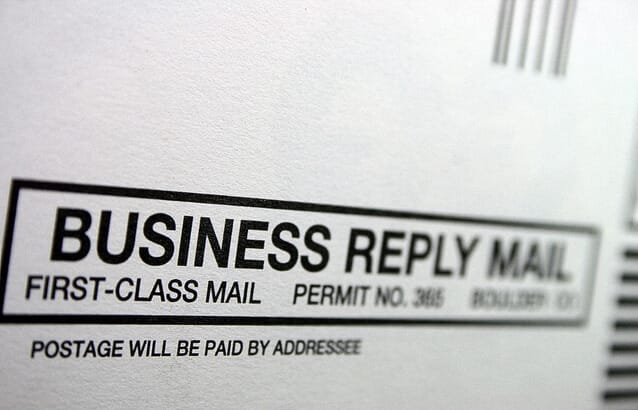Guest post by: Alison Parcell
Direct mail marketing is still an effective form of advertising. Done right, it can have a greater impact than online advertising. However, the costs of sending a physical letter to every person on your list far exceed those of sending an email, so it’s important to manage direct mail campaigns carefully.

1.Bad lists
The most common mistake that new direct mail marketers make is to buy a list from a broker and send out a standard message, without considering the list’s criteria. General lists are just that—general—and your list of “People interested in IT” could even include competitors. Clean the list before sending direct mail.
2. Unfocused campaigns
A campaign sent to existing customers should look very different than one going to a cold list. Tailor your messages properly to let your existing customers know they are appreciated and to motivate prospective customers to use your company.
3. Weak offers
Existing customers may be happy with a free shipping offer, or 20% off specific products or services. However, when trying to attract new customers, consider offering something a little more interesting, such as a free product with the first order or a substantial rebate. Remember that each new customer could be worth a lot of money, so it’s worth spending extra to acquire quality, targeted customers.
4. Wasting money on fancy mailers
Effective direct mail messages don’t have to be flashy or expensive. In fact, expensive-looking brochures with lots of photographs and very little content often perform worse than plain old black-and-white mailings. As long as your message is well laid-out and typo free, presentation doesn’t matter that much.
5. Bad sales copy
Make sure your copy is powerful, and designed to sell. Start your message with a provocative question, your best offer, or proof that you can solve a problem your recipient is having. Once you’ve grabbed the reader’s attention, move on to your sales pitch.
6. No call to action
Just like email marketing, it’s important to include a call to action in your direct mail messages. Calls to action work, and they reduce the likelihood of your marketing message going stale until the offer has already expired.
7. No follow-up
The chances of your message arriving the same day that the recipient is looking for the sort of product or service you sell are incredibly slim. Don’t expect immediate conversions from your first direct mail campaign, especially if your brand is not that well known. Follow up a few weeks later, and keep sending messages periodically so that your brand stays top of mind. Eventually, response rates will pick up.
8. Weak follow through
If someone responds to your messages, you follow through with your offer promptly. This is particularly important if you are a less well-known brand. Slow response times could ruin your reputation.
9. Failure to distinguish inquiries from qualified leads
When someone responds with a request for information, this is an inquiry. Many novice marketers confuse early inquiries with qualified leads, which makes it harder to track the results of their marketing campaigns.
10. Repetition
Another common mistake is thinking of direct mail as a slower form of email. Do not send the same message via email and print mail. This will irritate your customers, make them feel like you have wasted their time, and make you look lazy. Use different messages and different incentives for each marketing channel.
What has been your experience with direct mail marketing, and what are your thoughts on mistakes direct mail marketers make? Please leave a comment.
Alison Parcell provides guest posts on behalf of Hallmark Consumer Services, an award-winning business specializing in e-commerce fulfillment services and direct mail. You can also follow Hallmark Consumer Services on Twitter @HallmarkFulfils.
More on Direct Mail Marketing
How to Circumvent Resistance and Stay Out of the Trash Bin
3 Important Reasons to Use Lift Notes in Sales Letters








Great post